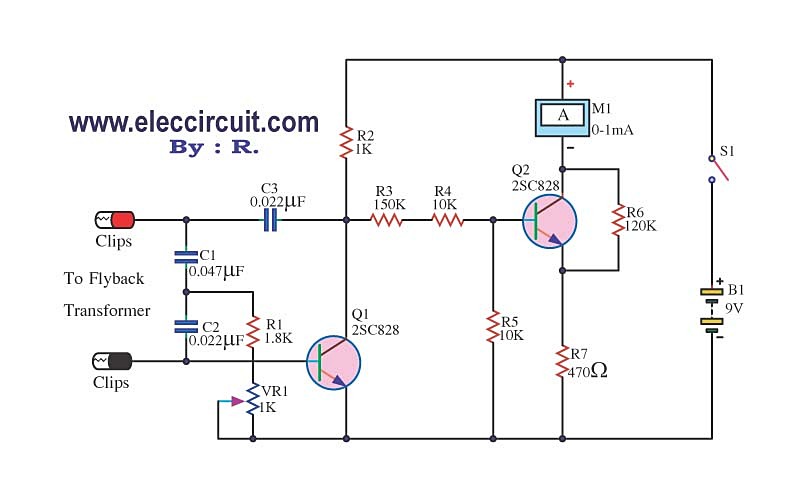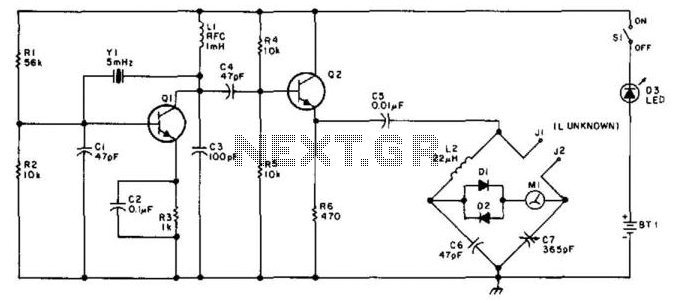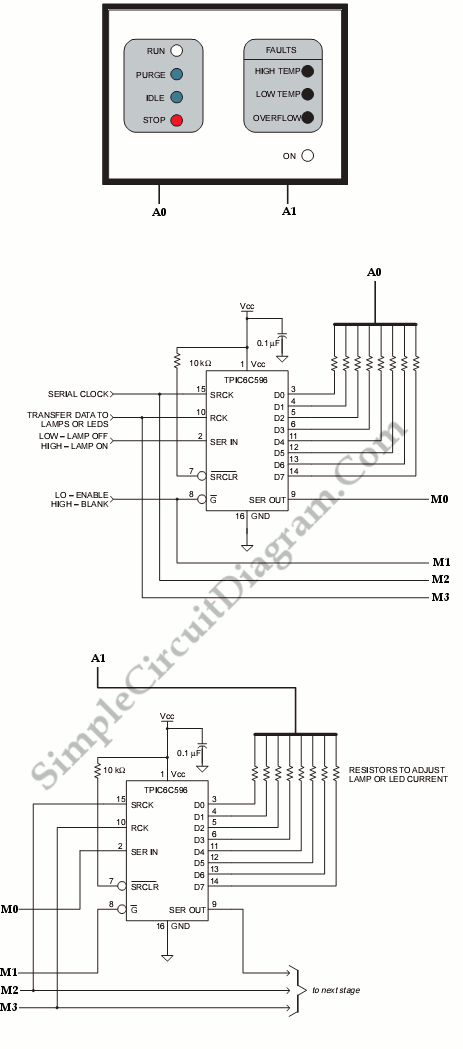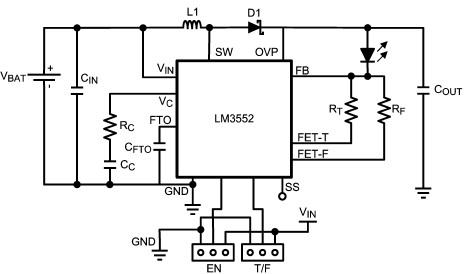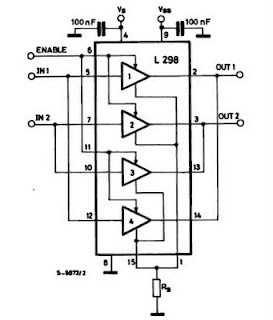
half bridge flyback driver
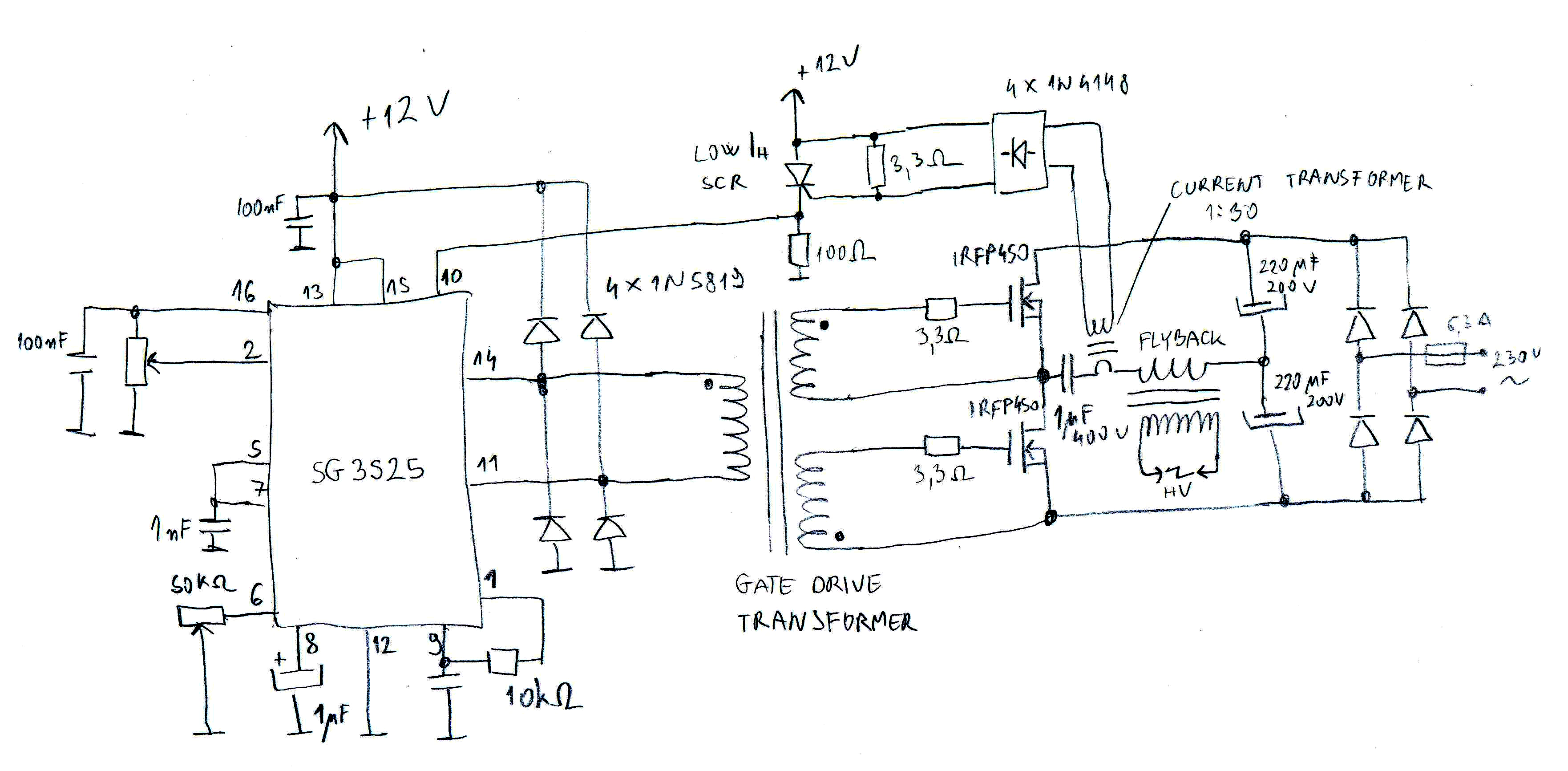
A flyback driver is a common high-voltage generator used by amateurs. It consists of a cathode-ray tube (CRT) TV high-voltage transformer driven by a high-frequency inverter to obtain a high-voltage output. The initial and simplest driver designs typically featured a single silicon switch driving the transformer in flyback mode, which has proven to be quite effective.
A flyback driver operates by utilizing the principles of inductive energy storage and rapid switching. The high-voltage transformer, often sourced from CRT televisions, is designed to convert low-voltage input into high-voltage output through a process known as flyback operation. The transformer is characterized by its ability to store energy in its magnetic field when current flows through the primary winding. When the silicon switch is turned off, the collapsing magnetic field induces a high voltage in the secondary winding, resulting in a significant output voltage.
The high-frequency inverter is a critical component that enables the efficient operation of the flyback driver. It typically consists of a pulse-width modulation (PWM) controller that regulates the switching frequency and duty cycle of the silicon switch, optimizing the energy transfer to the transformer. This high-frequency operation allows for a more compact design and reduces the size of passive components, such as capacitors and inductors, while improving overall efficiency.
Safety precautions are paramount when working with flyback drivers due to the high voltages generated, which can exceed several kilovolts. Proper insulation, protective enclosures, and the use of appropriate components rated for high voltage are essential to prevent electrical hazards. Additionally, the design should incorporate features such as snubber circuits to protect the switching device from voltage spikes and ensure reliable operation.
In summary, the flyback driver is a versatile and effective high-voltage generator that leverages a CRT transformer and high-frequency inverter to produce high-voltage outputs. Its simple design and ability to generate significant voltages make it popular among hobbyists and engineers alike, although careful attention to safety and component selection is critical for successful implementation.A flyback driver is a common amateur high voltage generator. It consists cathode-ray tube TV high voltage transformer driven by a high frequency inverter, in order to obtain HV output. The first and simplest driver designs generally consisted of a single silicon switch driving the transformer in flyback mode, which turns out as quite..
🔗 External reference
A flyback driver operates by utilizing the principles of inductive energy storage and rapid switching. The high-voltage transformer, often sourced from CRT televisions, is designed to convert low-voltage input into high-voltage output through a process known as flyback operation. The transformer is characterized by its ability to store energy in its magnetic field when current flows through the primary winding. When the silicon switch is turned off, the collapsing magnetic field induces a high voltage in the secondary winding, resulting in a significant output voltage.
The high-frequency inverter is a critical component that enables the efficient operation of the flyback driver. It typically consists of a pulse-width modulation (PWM) controller that regulates the switching frequency and duty cycle of the silicon switch, optimizing the energy transfer to the transformer. This high-frequency operation allows for a more compact design and reduces the size of passive components, such as capacitors and inductors, while improving overall efficiency.
Safety precautions are paramount when working with flyback drivers due to the high voltages generated, which can exceed several kilovolts. Proper insulation, protective enclosures, and the use of appropriate components rated for high voltage are essential to prevent electrical hazards. Additionally, the design should incorporate features such as snubber circuits to protect the switching device from voltage spikes and ensure reliable operation.
In summary, the flyback driver is a versatile and effective high-voltage generator that leverages a CRT transformer and high-frequency inverter to produce high-voltage outputs. Its simple design and ability to generate significant voltages make it popular among hobbyists and engineers alike, although careful attention to safety and component selection is critical for successful implementation.A flyback driver is a common amateur high voltage generator. It consists cathode-ray tube TV high voltage transformer driven by a high frequency inverter, in order to obtain HV output. The first and simplest driver designs generally consisted of a single silicon switch driving the transformer in flyback mode, which turns out as quite..
🔗 External reference

